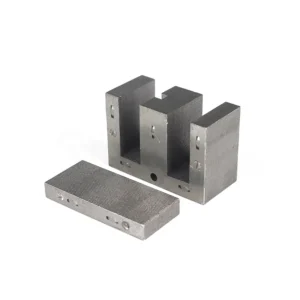Introduction
The demand for energy-efficient materials has never been more critical. In both developed and emerging markets, the push for greener infrastructure and smarter electricity usage is transforming how we design and manufacture electrical equipment. Among the many engineering materials available today, cold rolled electrical steel stands out as one of the most important. From the core of transformers to the rotors in electric vehicles, this precision-engineered steel plays a vital role in enhancing energy performance across a wide range of sectors.
This blog explores the importance, composition, production process, and real-world applications of cold rolled electrical steel. With a focus on its role in both the European and Middle Eastern markets, we also look at how this material is shaping the future of power and energy systems worldwide.
What Is Cold Rolled Electrical Steel?
Cold rolled electrical steel is a silicon-based steel produced through cold rolling, annealing, and surface coating. It is specifically designed to have excellent magnetic properties, making it ideal for use in electromagnetic applications. It has high permeability, low core loss, and minimal hysteresis, which allows it to conduct magnetic flux efficiently—an essential factor in power conversion systems.
There are two types:
- Grain-Oriented Electrical Steel (GOES): Designed for applications where the magnetic field follows a specific direction, such as transformers.
- Non-Grain-Oriented Electrical Steel (NGOES): Suitable for rotating machinery like motors and generators, where the magnetic field is multidirectional.
Manufacturing Process
The production of cold rolled electrical steel is highly technical and includes several critical steps:
- Hot Rolling and Pickling: Raw steel slabs are hot rolled and cleaned to remove oxides.
- Cold Rolling: The steel is further processed to reduce its thickness and improve surface smoothness.
- Annealing: Heat treatment enhances magnetic properties by realigning grain structures.
- Decarburization: Reduces carbon content to improve electrical resistance.
- Surface Coating: Adds insulation to reduce eddy current loss and enhance corrosion resistance.
Every stage of production is optimized to ensure consistent thickness, superior magnetic performance, and high-quality surface finishes. These characteristics allow cold rolled electrical steel to perform reliably in high-speed and high-temperature conditions.
Key Benefits
The technical advantages of cold rolled electrical steel include:
- Low Core Loss: Reduces energy loss in magnetic circuits, improving system efficiency.
- High Magnetic Permeability: Enables easy magnetization, enhancing the responsiveness of electrical machines.
- Dimensional Accuracy: Ensures compatibility with precision equipment in industries such as aerospace and automotive.
- Surface Insulation: Enhances electrical resistance, reducing the risk of short circuits.
- Mechanical Stability: Withstands mechanical stress during operation in motors and transformers.
These advantages are crucial for industries aiming to meet international energy efficiency standards, particularly in regions like Europe and the Middle East.
Applications in Key Industries
1. Power Distribution and Grid Infrastructure
Cold rolled electrical steel is extensively used in the cores of transformers. Its grain-oriented variant helps reduce energy loss during voltage transformation, which is essential for efficient electricity transmission across long distances. In Europe, where grid modernization is a priority, and in the Middle East, where infrastructure expansion is underway, this material is critical.
2. Electric Motors and Automotive Systems
Non-grain-oriented cold rolled electrical steel is ideal for use in electric motors. In EVs (electric vehicles), for example, lightweight and highly efficient motors are needed to maximize battery performance. As the EV sector grows rapidly in both regions, demand for this steel continues to rise.
3. Industrial Automation and Smart Manufacturing
Energy-efficient motors are also essential in automated factories and smart manufacturing systems. Cold rolled electrical steel helps reduce energy consumption while maintaining performance in high-load environments.
4. Renewable Energy Technologies
Wind turbine generators, solar inverters, and hydropower systems all benefit from low-loss magnetic cores. Cold rolled electrical steel allows renewable technologies to operate more efficiently, helping meet sustainability goals across the EU and Gulf states.
5. Household Appliances
From refrigerators to washing machines, energy-efficient appliances depend on optimized motors. Manufacturers rely on this steel to meet the latest energy labeling and compliance regulations in Europe and beyond.
Market Trends in Europe and the Middle East
Europe: The EU’s Green Deal and the push toward carbon neutrality are driving investment in energy-efficient materials. Manufacturers are seeking materials that help reduce emissions while improving system performance. Cold rolled electrical steel is increasingly being sourced locally to reduce supply chain disruptions.
Middle East: Nations such as the UAE and Saudi Arabia are investing heavily in power infrastructure, electric mobility, and smart cities. Demand for cold rolled electrical steel is growing not just for domestic use but also for export products targeting Asia and Africa. Regional manufacturers are exploring partnerships and joint ventures to secure long-term supply chains.
Innovations and Technological Developments
- Ultra-Thin Steel Grades: These provide reduced core loss and are especially useful in high-frequency applications like high-speed motors.
- Domain Refinement: Techniques like laser scribing can improve magnetic properties even further.
- High-Strength Coatings: These new coatings improve thermal resistance and enable use in harsh operating environments.
- Automation in Rolling Mills: AI-based process control ensures consistent quality at scale.
Such innovations not only increase the performance of the material but also lower production costs over time.
Environmental Benefits
The use of cold rolled electrical steel directly contributes to energy conservation and sustainability. In transformers, it can reduce core loss by up to 30%, resulting in significant electricity savings over the product’s lifetime. Furthermore, the material itself is recyclable, making it an environmentally friendly choice in a circular economy.
By reducing energy waste, this steel also helps countries meet their carbon reduction commitments under international frameworks like the Paris Agreement.
Challenges in the Global Supply Chain
Despite its many benefits, cold rolled electrical steel comes with certain challenges:
- Raw Material Costs: Fluctuations in silicon and iron pricing can affect profitability.
- Production Complexity: High-quality grades require precision manufacturing, which can limit supply.
- Trade Barriers: Tariffs and regulations on steel imports can complicate sourcing in some regions.
To address these challenges, manufacturers are diversifying suppliers and investing in local production capacity, especially in energy-transition-focused markets.
Conclusion
Cold rolled electrical steel is more than just a material—it is a strategic component of the modern energy landscape. Its role in reducing energy loss, enhancing system reliability, and enabling sustainable design makes it invaluable for a wide range of industries. As Europe and the Middle East continue to invest in smart infrastructure and clean energy, the demand for this advanced steel will only increase.
For companies looking to stay competitive and compliant in an increasingly green economy, adopting cold rolled electrical steel is not just a technical choice—it is a business imperative.




